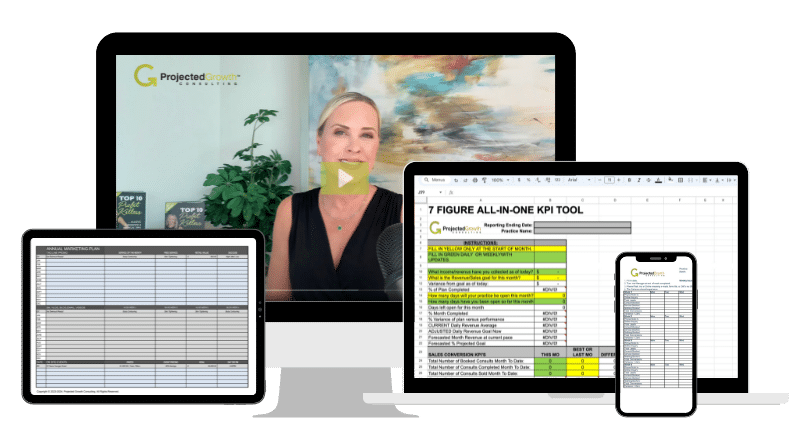
Build a healthier business by tracking your key expenses to identify problem areas and improve your net profit
It’s simple, right? If you spend less money than you make, your business will stay afloat. But if you want it to be a downright success, you need to spend wisely. By measuring your expenses monthly and creating quarterly cost-cutting strategies, you will soon see an increase in your net profit.
Examine your most significant costs as a percentage of income. While your expenses will go up when your sales do, percentages provide a consistent benchmark to ensure these expenses stay in line with income.

Where Does All The Money Go?
The top five expenses for elective practices include labor, cost of goods, rent and marketing, then followed by all expenses that exceed 1% of income.
While some or most numbers will differ, knowing the industry averages will provide a good indicator of what your percentages should look like to stay healthy:
| Marketing | 5-20% | Retail Commission | 10% |
| Payroll | Under 25% | Insurance | 2-3% |
| Owner Draw | 5-10% | Taxes | 1-3% |
| Net Profit | 10-30% | EQ | 5-10% |
| Retail COG | 50% | Utilities | .5-1% |
| Injectable COG | 50% | Prof. Fees | 1-10% |
Managing Expenses
Staff motivation and net profitability can be linked in a rewarding way for everyone involved. Consider offering a practical bonus plan for your manager or director by rewarding them for cost savings or for driving down percentage costs of goods. They could save on things like office supplies, retail, back bar, medical supplies, and staff turnover.
Once you benchmark your costs of goods by areas, you can set quarterly goals to decrease your expense percentages and create a cost savings split as a bonus to incentivize smarter inventory ordering, sourcing of products and inventory management of practice supplies under their control. Cost savings bonus structures provide a useful way to save your practice money while rewarding your staff for good work.
Tracking Progress
Although you will track your sales weekly to reach your monthly goals, you only want to review expenses on a quarterly basis. When you are working to increase revenue, you can measure it immediately and see a difference, but if you look at your expenses in relation to sales too often, the slower pace to improve upon spending may discourage you.
If you change a vendor or find better pricing on supplies, results will show up a few months after you have made those changes. Be patient. Small incremental adjustments will begin to show. After a year of taking these steps, you will be pleased with your progress.
Complete our 1-Hour Expense Reduction Action Worksheet to prioritize the steps to take to improve your numbers.
Read my book to explore this subject further, and to see how your retail sales play a big part in improving your net profitability and increasing your patient retention.
